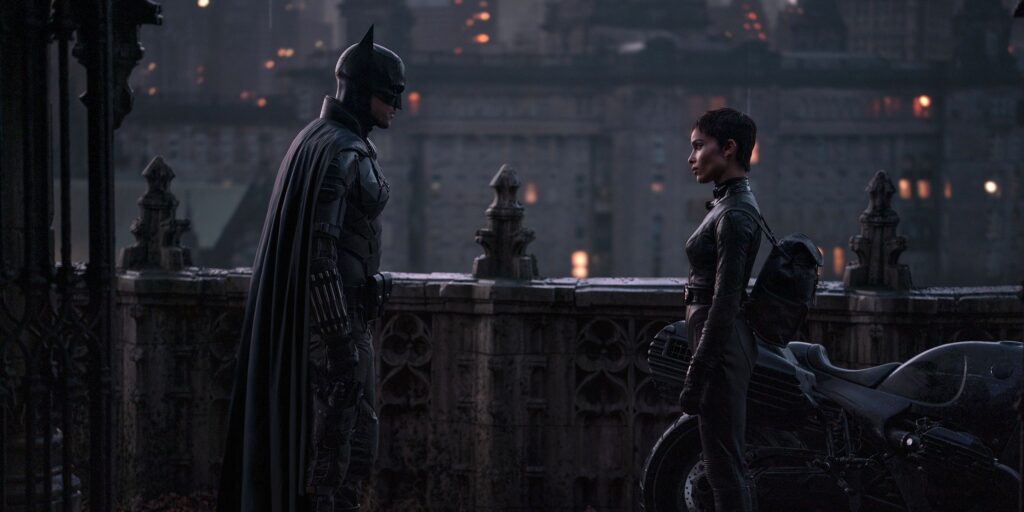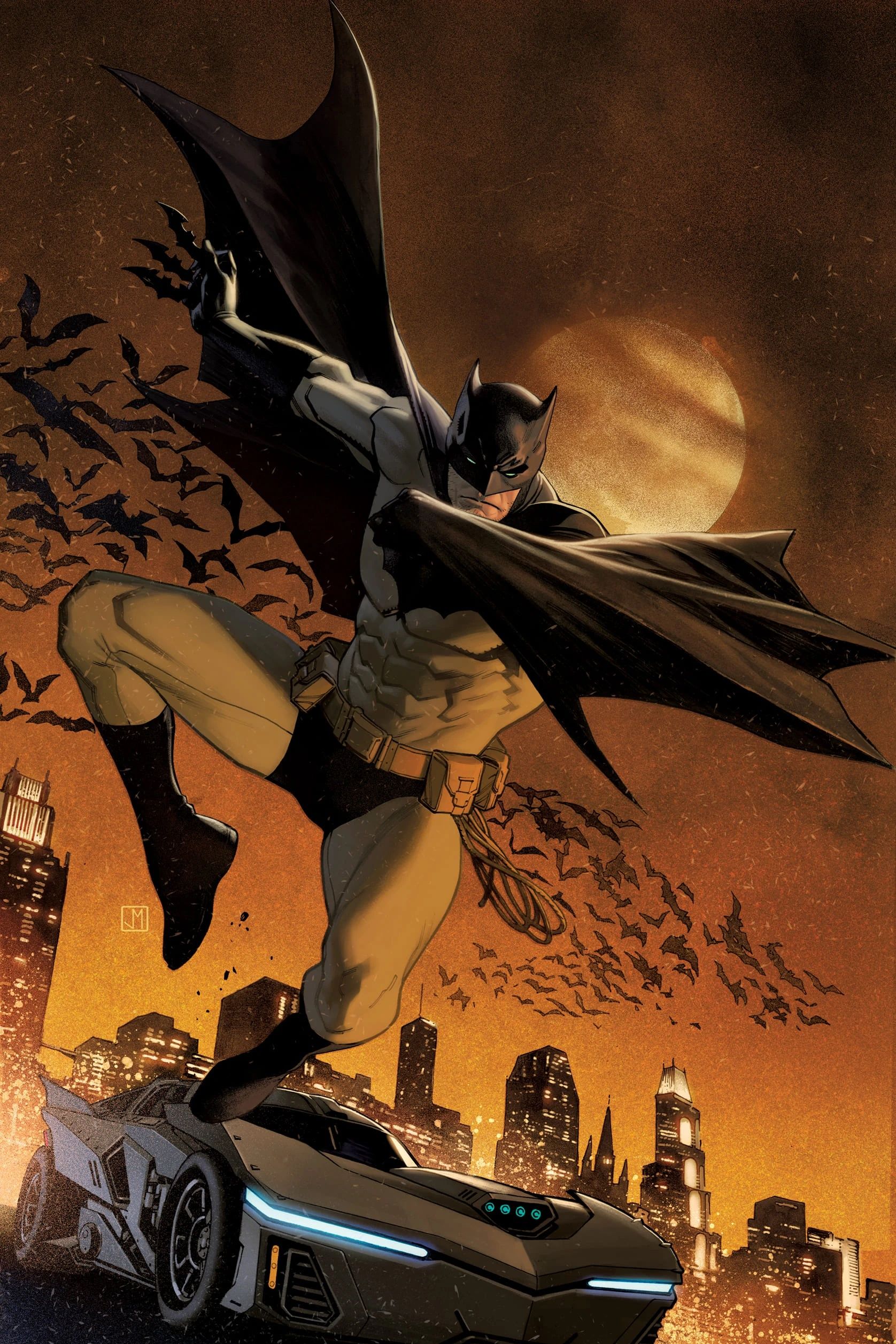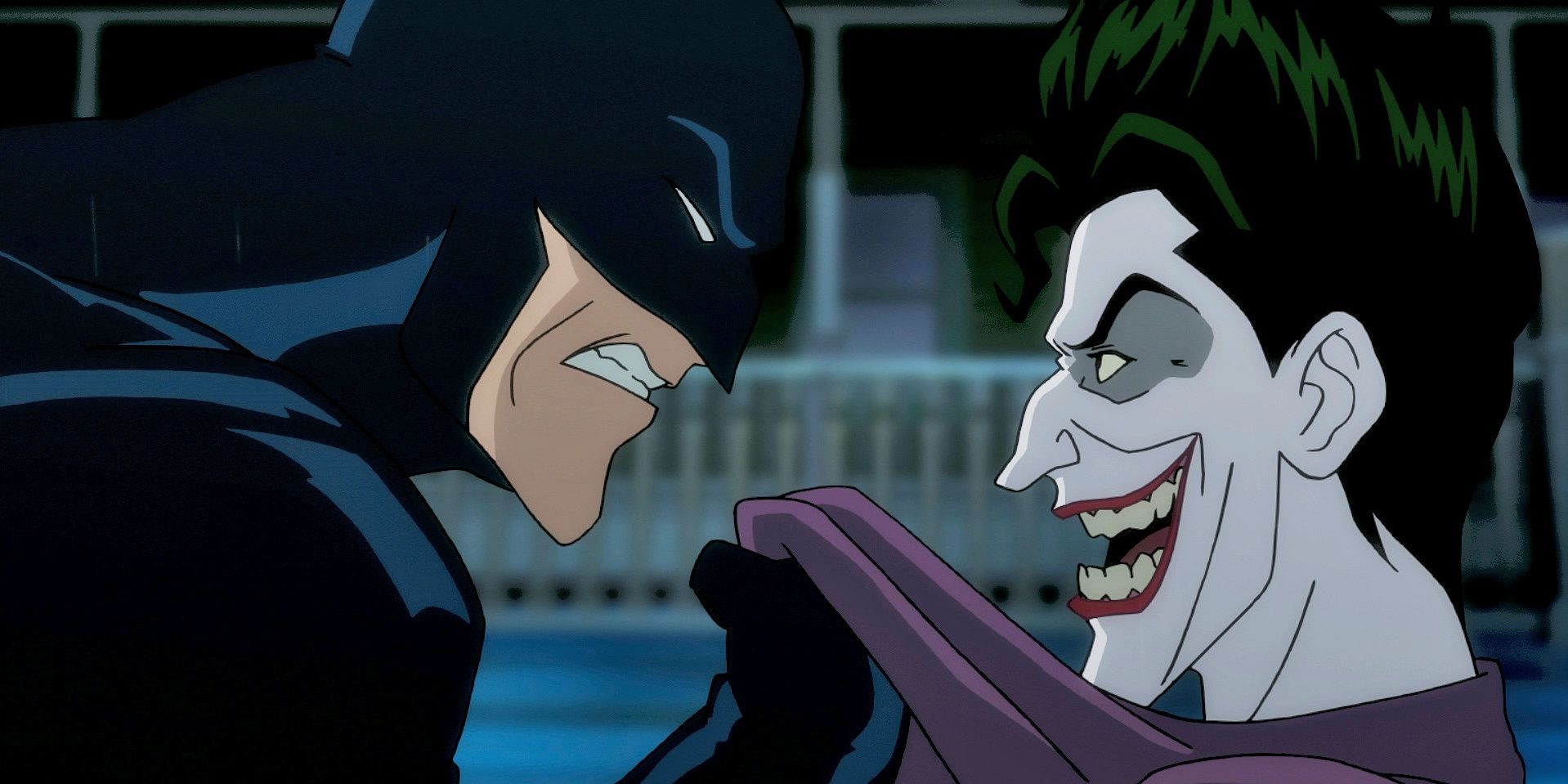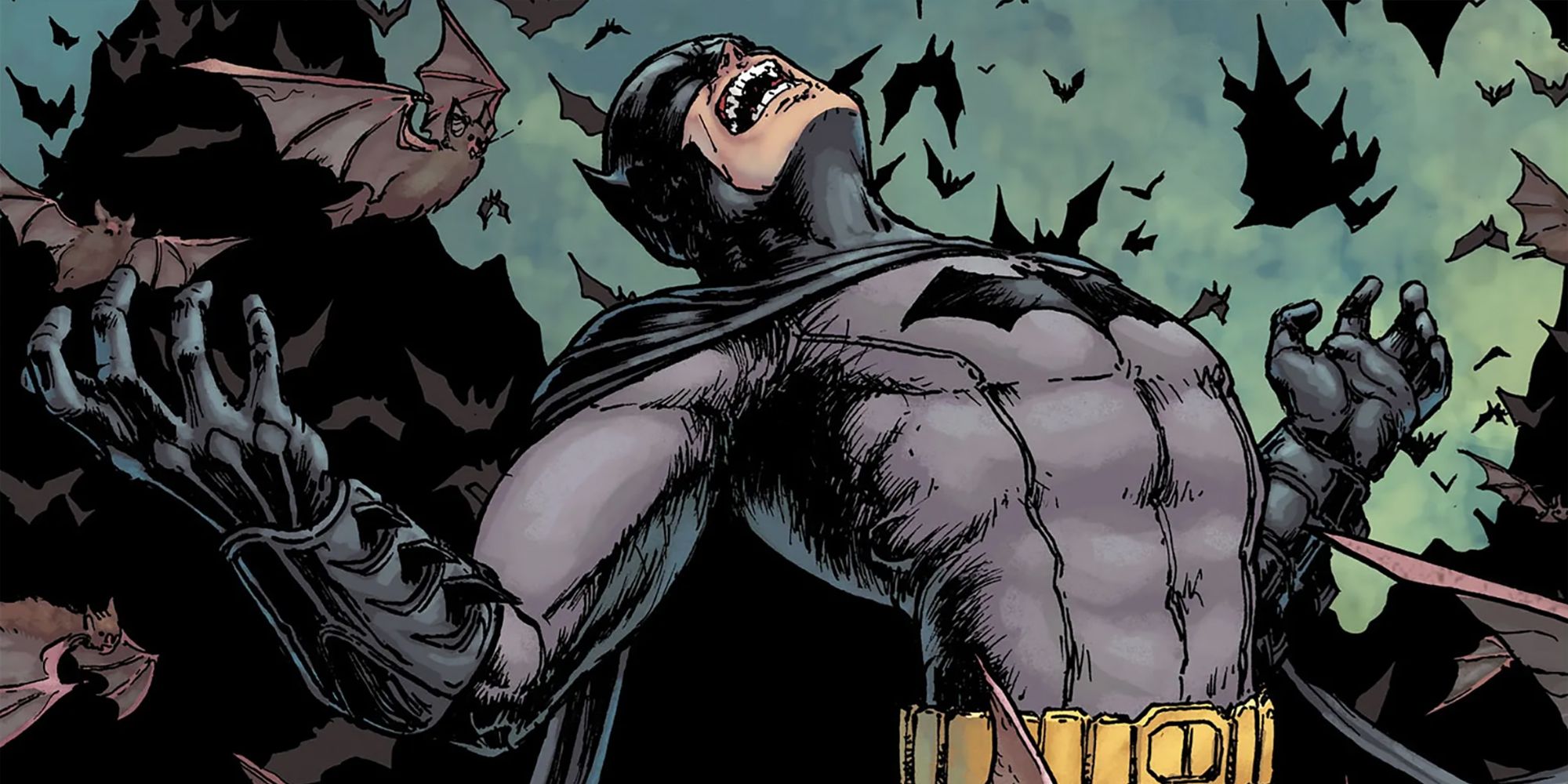
Batman’s no kill rule is often misunderstood, but ironically, the actual mechanics of it are very simple. It’s all right there in the name: Batman will not kill anyone. This means that he will not use lethal force or directly take a life, and also will not allow anyone to die as a result of his actions. He will negotiate in order to prevent hostages from being killed and will fund the recovery of anyone he is unable to protect from injury.
In service of this rule, Batman avoids the use of lethal weaponry. This most famously outlaws guns, but in general it means Batman’s arsenal is designed to stun and incapacitate, not to kill.
What Is Batman’s No Kill Rule?
The no kill rule was not a part of Batman from the very beginning. Before the direction of the character was fully settled upon, he went through a dark period where he was very willing to kill and used firearms liberally. In one of the earliest Batman comic books, 1939’s Detective Comics #37, Batman nonchalantly shoves a man to his death, with his only remark on the matter being that the criminal got what was coming to him. There was no real consideration as to a no kill rule being a part of the character at this point, at least not one that was made public.
Batman’s creators, Bill Finger and Bob Kane, had different perspectives on Bruce Wayne’s relationship to murder. Kane felt that the gruesome and violent nature of his character was a perfect fit and paid homage to the pulp fiction serials that had inspired him, which were similar in tone. Finger, on the other hand, went on to claim that he had always been uncomfortable with Batman being willing to kill other people. He felt that a man who had watched his parent’s senseless murder as a young child would never be willing to do such a thing to anyone else. The way Finger saw it, the unwillingness made Bruce someone who sought after justice, not vengeance. Ultimately, the decision to sanitize Batman a bit was not made by either of them. In the wake of a moral panic against violence in comic books, the pair were told by their editor to tone the comic down, giving way for the birth of Batman’s no kill rule.
History of Batman’s No Kill Rule In Film and Television
While not a part of the character from day one, Batman’s no kill rule became established relatively quickly within the comics. Other forms of media have altered between adhering to it and not, potentially confusing audiences as to the legitimacy of it. The Killing Joke doesn’t really count, as it is directly based on a comic and is meant to be ambiguous. That being said, it’s still worth noting that the film ends with Batman possibly having killed the Joker. The pair are laughing hysterically at Joker’s joke, with Batman’s hands on the clown’s shoulders. The camera pans down, and suddenly the Joker’s voice disappears and he stops moving, implying that Batman has strangled him.
Batman: The Animated Series kept the no kill rule as relevant as it had ever been, with Batman’s refusal to kill criminals cropping up numerous times. This makes as much practical sense as it does for comic books, as killing off a villain only means they can never return to the show. Most Batman series’ kept the no kill rule a core part of Batman’s mission statement.
It was live action films that began to deviate a bit. The Michael Keaton movies are probably the most notable example, which gleefully cast aside any aversion to the Caped Crusader creating a few widows. The iconic Batwing is decked out with guns and other lethal weapons, which Batman uses in abundance. Batman v Superman: Dawn of Justice went even further into uncharted territory. This version of Batman can’t even limit his lethal weapons to his vehicles and uses a multitude of guns throughout the movie, spitting in the face of the character’s legacy. The Batman marks a return to form, with Batman notably refusing to kill anyone and urging Catwoman not to go down that path.
The Misunderstanding of Batman In Popular Culture
Batman’s no kill rule gets a fair amount of criticism, mostly for being irresponsible and causing more harm than it does good. These critics say that Batman may have noble intentions, constantly bringing criminals to Arkham to be rehabilitated rather than end their lives, but doing this never actually ends the cycle of violence. Batman’s rogues always go on to escape from Arkham and cause more death and destruction. At a certain point, allowing them to continue to do this is simply reckless. It should be clear by now, they say, that Joker is never going to be redeemed and that every time he gets out of prison, more innocent people die. Robert Pattinson said of Batman’s famous rule (via DC.com):
“There is this rule with Batman. He must not kill. It can be interpreted in two ways. Either he only wants to inflict the appropriate punishment, or he wants to kill and his self-control prevents him from doing so.”
There are many reasons why this argument doesn’t hold up. The first and most grounded in reality is that Batman is a fictional character written to be entertaining. In addition, his primary medium is the comic book, something that has to come out with new issues frequently and which often continues a single continuity over very long periods of time. Of course writers aren’t going to kill off his most popular villains. If a writer has Batman kill a character like Catwoman or Bane, they now either cannot use that villain again, or have to come up with some sort of plot device to revive them, another thing which irritates comic book fans.
The more compelling defense of Batman’s no kill rule, however, revolves around the thematic purpose of it. Fans oftentimes think of Batman as if he were a real life figure, and weigh his actions by real life standards. They don’t take into account that these stories are works of fiction, which can eschew real world rationality in order to create meaning. For example, a common sentiment in recent times is the idea that Batman could do more good by donating money to Gotham’s infrastructure and really does nothing but beat up poor people. This isn’t really accurate, as the majority of Batman’s rogues are quite wealthy, and watching Bruce Wayne donate money and do nothing else just isn’t very entertaining. But more importantly, this take misses the point of the character. While he cares for Gotham and wants to do good, the thing that Batman truly wants the most is not to make the city as officially safe as possible. What he actually wants is to keep anyone from ever feeling as afraid as he did watching his parents die, and to become something so terrifying that he’ll never feel so afraid again either.
This same thought process reveals the true meaning behind his no kill rule as well. Killing his rogues would, technically speaking, be the logical decision. But Batman is not making his decisions based purely off of what makes the most rational sense. He wants to wage a war against crime, but he doesn’t want to do it in the most ruthlessly effective way possible. Batman wants to defeat his enemies by giving them a second chance, by being so much better than them that he can let them keep living. He can fight crime by not falling to the level of criminals.
In addition to his pursuit of justice, another important aspect of Batman is the way he verges on the edge of insanity. A long-running point of comparison is how little really separates Batman from his rogues’ gallery. They’re a bunch of strange characters in weird costumes, possessing unique skills and the capacity to cause a lot of damage. The thing that separates Batman from the villains is that he uses his skills to protect others, rather than for selfish or destructive purposes. If he gives into his base impulses and starts killing people, what makes him any different than a villain? What makes him different from the man who murdered his parents? There’s far more to Batman’s no kill rule than a simple question of efficiency.

Batman
Batman is one of the most popular and well-known superheroes of all time. Created in 1939 by Bob Kane and Bill Finger, Batman has evolved over the decades into a cultural icon.
As a child, Bruce Wayne’s parents were murdered in front of him. Since that day, Bruce made it his mission to fight back against the criminal element in Gotham City. Taking on the appearance of what scares him most, Batman faces off against powerful villains like the Joker, Two-Face, Bane, and the Penguin.

